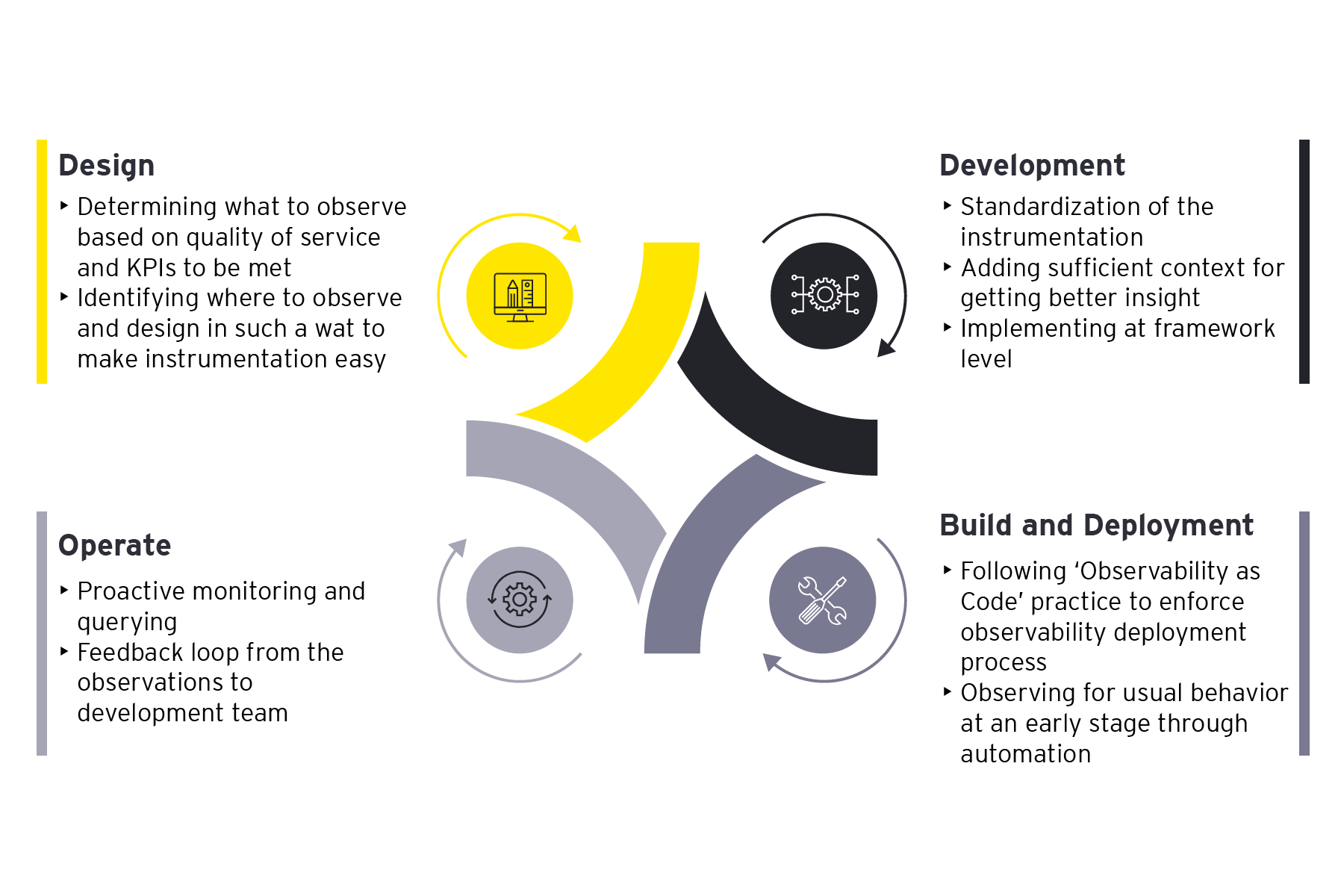The current challenges
While both TDD and BDD have their strengths, considering the scale and speed of modern systems, both techniques have some shortcomings in collecting and contextualizing a metrics-driven approach to developing and deploying resilient applications. When teams create a model, they assume that data is divided into two parts: signal and noise. The real pattern, the repeatable process that we hope to capture and describe, is the signal.
Everything else that impedes is referred to as noise. Engineers must move away from the traditional approach of simply monitoring well-understood infrastructure metrics and transition towards actively instrumenting code to be able to engage in a more constant “conversation” with production systems.
The site reliability engineering (SRE) Golden Signals that help and are relevant for resilient software development are:
- Latency: The time it takes to service a request which is equivalent to RED duration.
- Traffic: The level of demand being placed on the system which is equivalent to RED Rate.
- Errors: Tate of requests that fail which is equivalent to RED errors.
- Saturation: Saturation is dependent on which resources are constrained and includes a forward-looking component.
For the past two decades, IT teams have relied on Application Performance Management (APM) as the primary tool to monitor and troubleshoot applications and their networks. APM provides users with dashboards and alerts to troubleshoot an application’s performance in production. These insights are based on known or expected system failures, typically related to SRE golden signals, and provide engineers with alerts when pre-defined issues arise. But what about problems that develop unexpectedly? Today's software environments are increasingly distributed, with teams spread out geographically, creating, deploying, and maintaining programs.
Observability driven development
Observability-driven development (ODD) is an approach that integrates observability best practices into the early stages of the software development lifecycle. In microservices, observability exposes the health of the production system, enabling developers to detect and fix performance issues. Microservices observability also provides visibility and real-time user monitoring to optimize application performance and availability.
Observability in software engineering plays a crucial role in proactively monitoring security. Data streams from various stages of development can be used to detect unusual activity and trigger actions to mitigate or block the impact of a security issue. Even if the workload is on the main platform and starts causing problems, observability can be used to initiate actions that limit or shut down the workload, replacing it with a known working variant if necessary. Engineers in upstream DevOps will also find observability valuable for overseeing outputs across different microservices and virtual containers to ensure these environments are ready for production as they progress through the DevOps line.
Observability benefits
Observability can be scaled automatically. For example, by specifying instrumentation and data aggregation as part of a Kubernetes cluster configuration, you can gather telemetry from the moment it spins up until it spins down. A useful aspect of observability-driven development is tracking the performance of an application or platform over time. Changes can be detected, and off-target trends identified, triggering correction, or prompting human intervention.
- Observability-driven development (ODD) encourages a left-shift of the activities required for observability right from the early stages. Observability platforms monitor metrics, traces, and logs in one unified place.
- Collects and visualizes metrics and sets up alerts for potential issues to gain insights into the performance and health of your systems.
- Optimizes your application’s performance with end-to-end visibility into real requests and code through distributed tracing.
- Cost-efficiently debugs, audits, and analyzes logs from all your services, applications, and platforms at scale.
System faults can be identified and resolved significantly faster, often within hours or even minutes, once ODD is implemented with the appropriate stack, instrumentation, and visualization.




